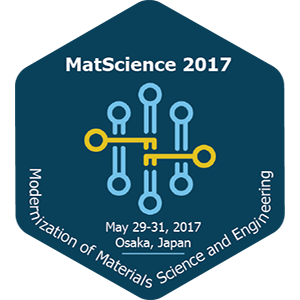
Meng Nan Chong
Monash University, Malaysia.
Title: Prospects of Nanostructured Semiconductor Thin Films and Composites for Solar Hydrogen Energy Conversion and Storage
Biography
Biography: Meng Nan Chong
Abstract
Solar energy being the largest renewable energy source on earth is an attractive energy source option that could be harnessed to electrify the cities of future. Among the various available solar-based technologies, the conversion of solar into storable form of hydrogen (H2) energy via the photoelectrochemical (PEC) technology is a promising way to harness the great benefits from the Sun. This is achieved through the application of nanostructured semiconductor photoelectrodes in an electrochemical cell, whereby water molecules are dissociated into H2 and oxygen through the sequential PEC reactions occurring on the semiconductor surfaces. To date, however, almost all the singular semiconductor photoelectrodes used exhibited poor performance and low efficiency during the solar H2 fuel conversion. The effective separation of photogenerated charge carriers in photoelectrodes is a key to alleviate this technical issue. This presentation outlines the photogenerated charge transfer properties and PEC water splitting ability in various nanostructured semiconductor thin films and composites. Specifically, singular and composite semiconductor materials of α-Fe2O3, BiVO4, and MoO3 synthesized on fluorine-doped tin oxide as active photoelectrodes used for solar energy conversion and storage are discussed. Additionally, the role and mechanism of metal and non-metal dopants on the photogenerated charge transfer properties of semiconductor thin films and composites are elucidated. These are further interpreted using the outcomes from an advanced suite of characterisation methods, including FE-SEM, EDX, XPS, XRD and FTIR, and EIS. It is believed that the fundamental understanding gained through our studies is essential and helpful to design high-performance photoelectrodes for the application in PEC water splitting.

